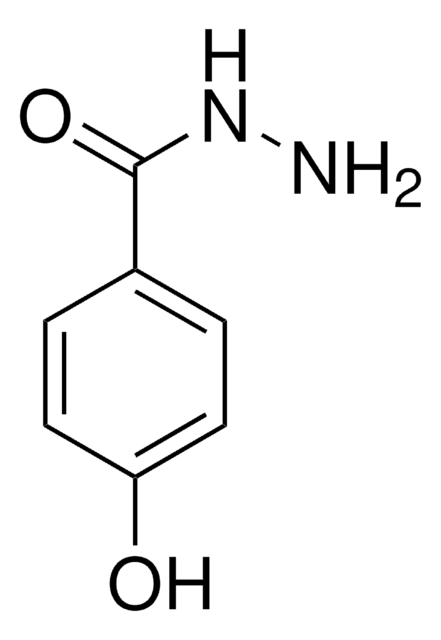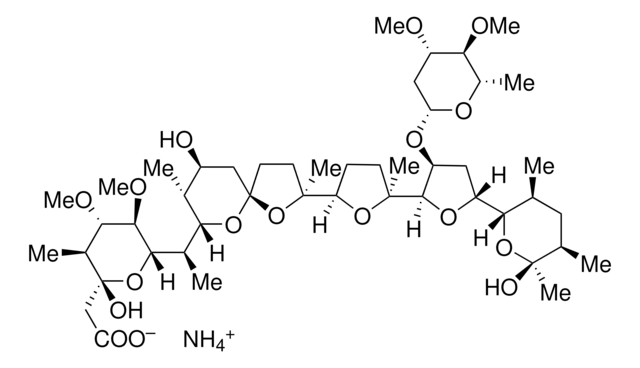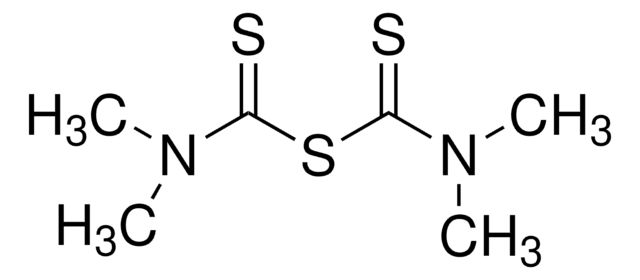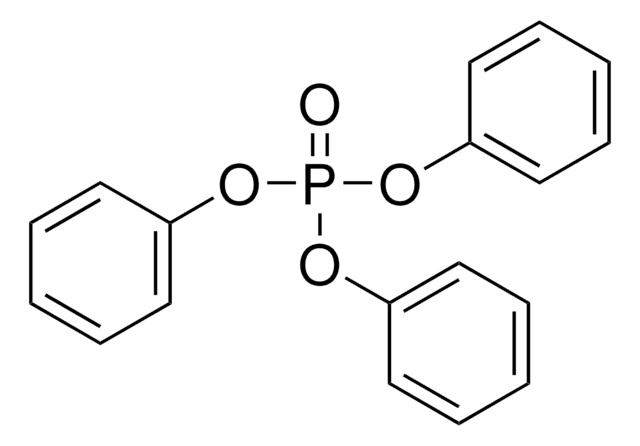N3905
Nicarbazin
Synonyme(s) :
N,N′-bis(4-Nitrophenyl)urea compound with 4,6-dimethyl-2-pyrimidinone
About This Item
Produits recommandés
Forme
powder
Niveau de qualité
Spectre d'activité de l'antibiotique
parasites
Mode d’action
cell membrane | interferes
Chaîne SMILES
Cc1cc(C)nc(O)n1.[O-][N+](=O)c2ccc(NC(=O)Nc3ccc(cc3)[N+]([O-])=O)cc2
InChI
1S/C13H10N4O5.C6H8N2O/c18-13(14-9-1-5-11(6-2-9)16(19)20)15-10-3-7-12(8-4-10)17(21)22;1-4-3-5(2)8-6(9)7-4/h1-8H,(H2,14,15,18);3H,1-2H3,(H,7,8,9)
Clé InChI
UKHWDRMMMYWSFL-UHFFFAOYSA-N
Vous recherchez des produits similaires ? Visite Guide de comparaison des produits
Application
Actions biochimiques/physiologiques
Autres remarques
Mention d'avertissement
Warning
Mentions de danger
Conseils de prudence
Classification des risques
Eye Irrit. 2 - Skin Irrit. 2 - STOT SE 3
Organes cibles
Respiratory system
Code de la classe de stockage
11 - Combustible Solids
Classe de danger pour l'eau (WGK)
WGK 3
Équipement de protection individuelle
dust mask type N95 (US), Eyeshields, Gloves
Faites votre choix parmi les versions les plus récentes :
Déjà en possession de ce produit ?
Retrouvez la documentation relative aux produits que vous avez récemment achetés dans la Bibliothèque de documents.
Les clients ont également consulté
Notre équipe de scientifiques dispose d'une expérience dans tous les secteurs de la recherche, notamment en sciences de la vie, science des matériaux, synthèse chimique, chromatographie, analyse et dans de nombreux autres domaines..
Contacter notre Service technique

















